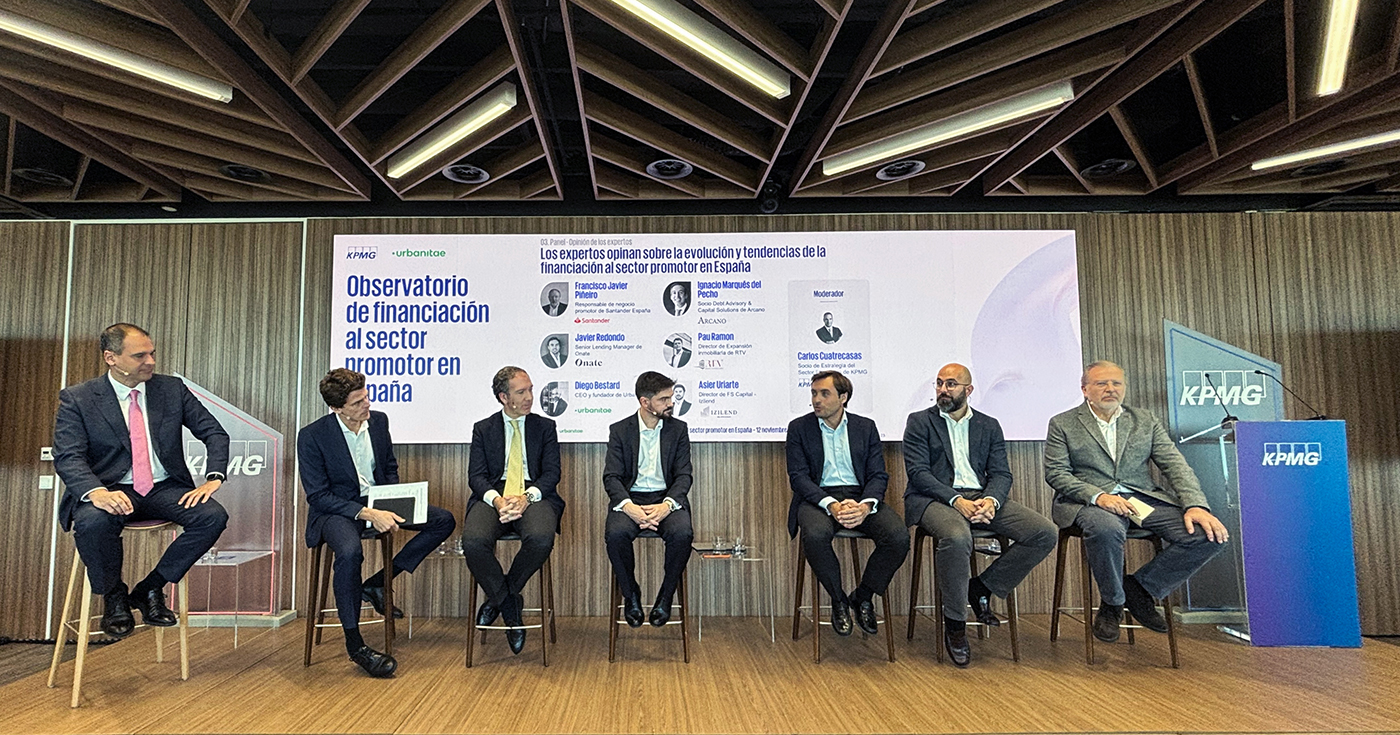
Alternative Financing Gains Ground in Real Estate Development in 2025
Last Updated on 13 November 2025 by Equipo Urbanitae
The Spanish real estate development market is entering a new cycle of growth and transformation. This is reflected in the First Observatory on Financing in the Real Estate Development Sector, prepared by Urbanitae and KPMG Spain, which for the first time offers a complete snapshot of the financial ecosystem supporting real estate development in the country.
The report, presented on November 12 at the Torre de Cristal in Madrid, points to a horizon of over €50 billion in real estate development investment by 2030, compared to the estimated €35 billion in 2024. Within that figure, alternative financing—currently representing 25–27% of the total—could reach up to 37% by 2030, or over €19 billion.
A More Balanced Financial Model
The Observatory, developed through surveys of developers, financial institutions, investment funds, and alternative financing platforms, as well as in-depth interviews with representatives from Banco Santander, Arcano, FS Capital, Onate, RTV Grupo Inmobiliario, and Urbanitae, highlights a significant evolution in the sources of capital driving projects.
Although banks remain the main source of financing, their share is moderating in favor of new alternative players, including debt funds, bridge loans, and real estate crowdfunding platforms.
“In some years, crowdfunding financing has seen annual growth exceeding 100%, demonstrating its ability to attract capital and establish itself as a complementary source,” emphasizes Diego Bestard, CEO and founder of Urbanitae. According to the study, this type of financing could exceed €1 billion annually in real estate development before the end of the decade.
Meanwhile, Carlos Cuatrecasas, partner at FS Consulting Strategy at KPMG, notes that “alternative financing has grown significantly and will continue to do so. Its role is especially relevant in segments where banks are less active, such as land acquisition, early-stage projects, or higher-risk developments.”
Alternative Financing: Flexibility and Professionalization
The report confirms that alternative financing does not compete with banking, but complements it, acting as a bridge between the developer’s own equity and traditional credit.
This model offers greater flexibility, allows financing to be adapted to the needs of each project phase, and reduces the initial financial burden for developers. In return, investors take on higher risk and therefore demand higher returns, typically between 12% and 15%, according to the Observatory.
The trend observed is clear: a more diversified, professional, and efficient ecosystem, where banks, funds, and alternative financiers coexist and add value at different stages of the development cycle.
Structural Challenges: Land, Costs, and Affordable Housing
Beyond the evolution of capital sources, the Observatory identifies three major challenges for Spanish real estate development:
- Lengthy urban planning processes, which in some municipalities exceed two years.
- Rising construction material costs, which pressure profit margins.
- Shortage of qualified labor, especially in residential construction.
In addition, there is a structural problem: the lack of affordable and social housing, which represents only 3.3% of the Spanish residential stock, compared to a European average of 8%. This deficit, combined with a projected increase of more than two million inhabitants between 2025 and 2030, will put pressure on supply and prices if measures to speed up development are not adopted.
The study points out that in 2025, the deficit of new housing in Spain is around 700,000 units, a figure that will continue to grow if construction rates are not increased. In this context, the combination of bank and alternative financing is emerging as a key lever to boost production and meet residential demand.
Learning from International Models
The international analysis included in the Observatory reveals that Anglo-Saxon markets have reached a higher level of maturity in capital diversification. In the United Kingdom, alternative financing already represents 40% of the total, while in the United States it exceeds 50%. In continental Europe, banks still dominate with shares of 75–80%.
This contrast highlights the growth potential of alternative financing in Spain and its role in the professionalization of development capital, following the lead of more mature markets.
An Observatory with a Vision of Continuity
The First Observatory on Financing in the Real Estate Development Sector is intended to be repeated annually, establishing itself as a reference tool for analyzing the evolution of capital in Spanish real estate. Its goal is not only to provide data but also to foster dialogue between developers, financiers, and institutions to build a more balanced, transparent, and sustainable model.
Consult the full report here. https://crowd.urbanitae.com/observatoriofinanciacion2025

